Built in 1927, the Hackworth Building is located at 137-141 East Laurel Street. It is a two-story red brick building with a flat roof. It features decorative brick work of corbelling and angled headers. The upper story includes nine windows with brick lintels and sills. The ground floor has been altered.
Current view: Empty Wales Jewelry space and Harding Insurance
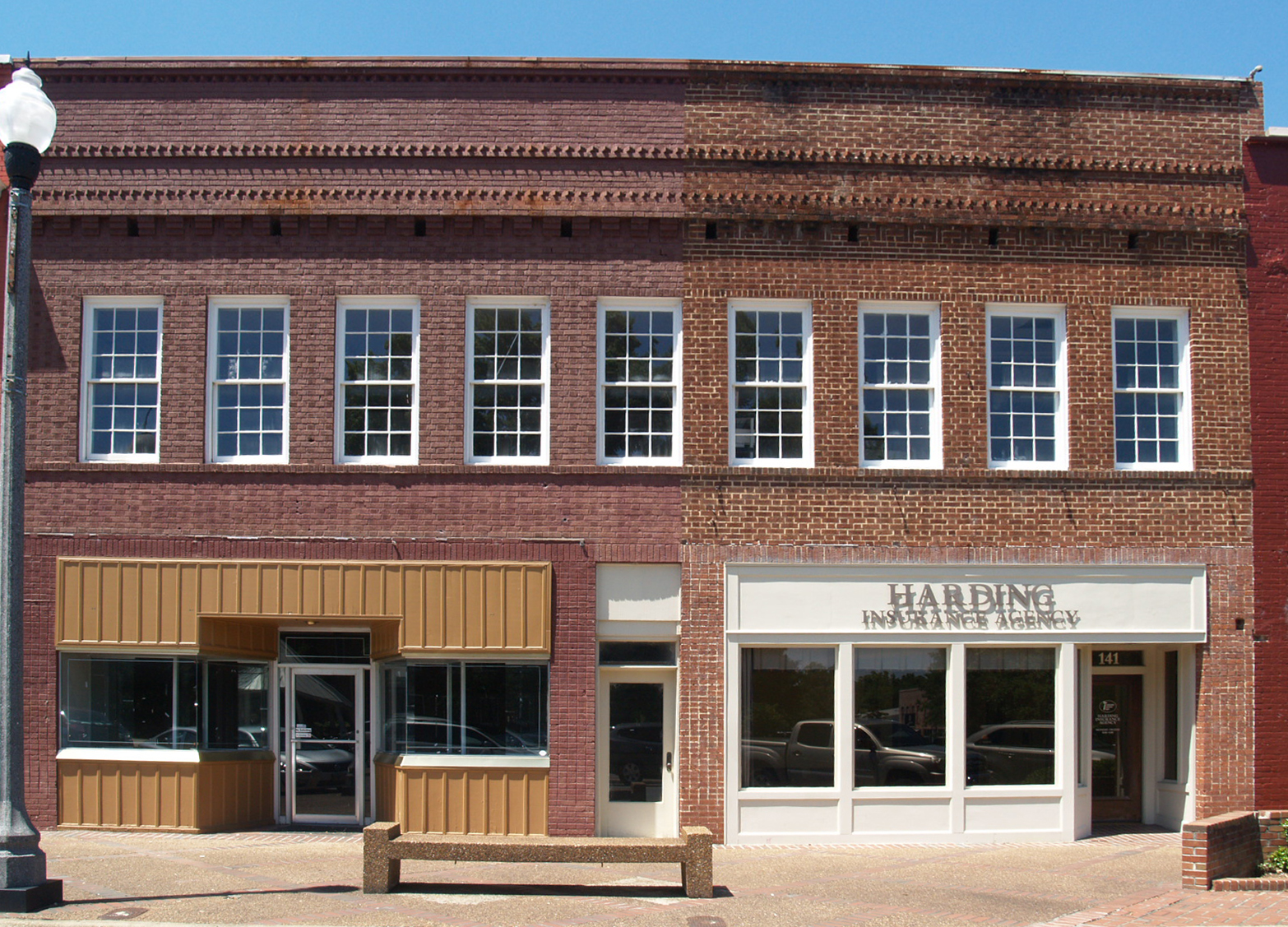
Early 1900s: Precursor to the brick building
Just as the current building houses two businesses, before the brick building was constructed in 1927, there were two frame business houses in this space, as shown by this detail from a 1920 photograph from the courthouse steeple:
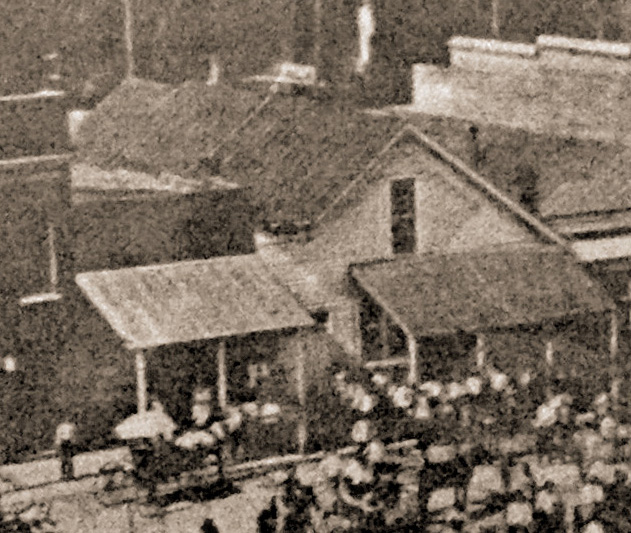
The current brick building is divided into two business spaces: addresses 137 and 141. It is not currently known what was housed at these addresses prior to Wales and Hodges.
Pre 1932 at the 137 address: A. L. Hipp
Though most of us who can remember the square today remember Wales Jewelery at the 137 address, this newspaper article from The Progressive Age indicates that A. L. Hipp and has son had just opened a optimetrist and watch repair business at this location when the younger Mr. Hipp became ill, forcing his father to end this extension of his Huntsville business in Scottsboro. He sod the business to William J. Wales in 1932.
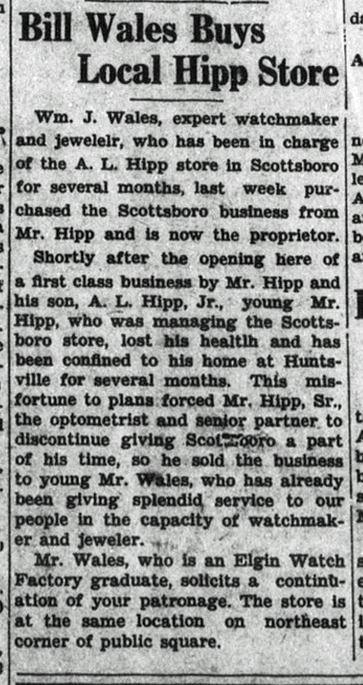
Based on a 1979 ad, where Wales Jewelry stated that they had been in business on the square more than 40 years, Wales Jewelry was in the location by the late 1930s.
Businesses above Wales Jewelry in 1956
In the 1956 phone book, Wales Jewelry was downstairs at 137, and these businesses were upstairs:
- 137 Dr. Sarah Archly, Optometrist
- 137 H. T. Foster, Attorney
- 137 Hamlet and Smith, Attorneys
- 137 Hembree Insurance Agency
- 137 Federal Land Bank of New Orleans
- 137 National Farm Loan Association
In the 1961 phone book, Wales Jewelry was downstairs at 137, and H. T. Foster, Attorney and Hamlet and Smith, Attorneys were upstairs. Dr. Sarah Atchley’s optometry practice had moved to this building from 204 E. Laurel, across Market Street.
In the 1966 phone book none of the tenants have changed, and John B. Tally, Attorney has moved his office from the Proctor Building to this building.
In 1975, Wales was still at 137. This long-time tenant closed up shop in DATE.
Drug stores at the 141 address
A succession of drug stores operated at this address. , but Hodges had moved to the location on Houston Street across from Doctors Rayford and Durwood Hodges. The Book and Gift Shop was in the former Hodges Drugs location at 141.
The founder of Hodges Drugs was L. C. “Mess” Hodges. He died in a motorcycle accident on the square in August 1945. His sons Charles and R. L. purchased the business from their mother. In 1945, the business was not just a busy drug business but also a sundry business and the passenger station and ticket office for the Trailways Bus. The business remained on the square until the early 1960s, when it moved to the corner of Houston and Laurel Street, across from the office of Doctors Julian Hodges and Carl Collins. It finally moved to Parks Avenue and was known as H & H Pharmacy in the 1970s before it closed after both Hodges brothers who served as its primary pharmacists died. In 1968, the Hodges brothers had a business called Mortar and Pestle. It is not clear where this business was located.
Most recently, on the left was Wales Jewelry; on the right is Harding Insurance. Wales closed about 2010.
1930: ad from the JCHS Reminder for Presley Drugs
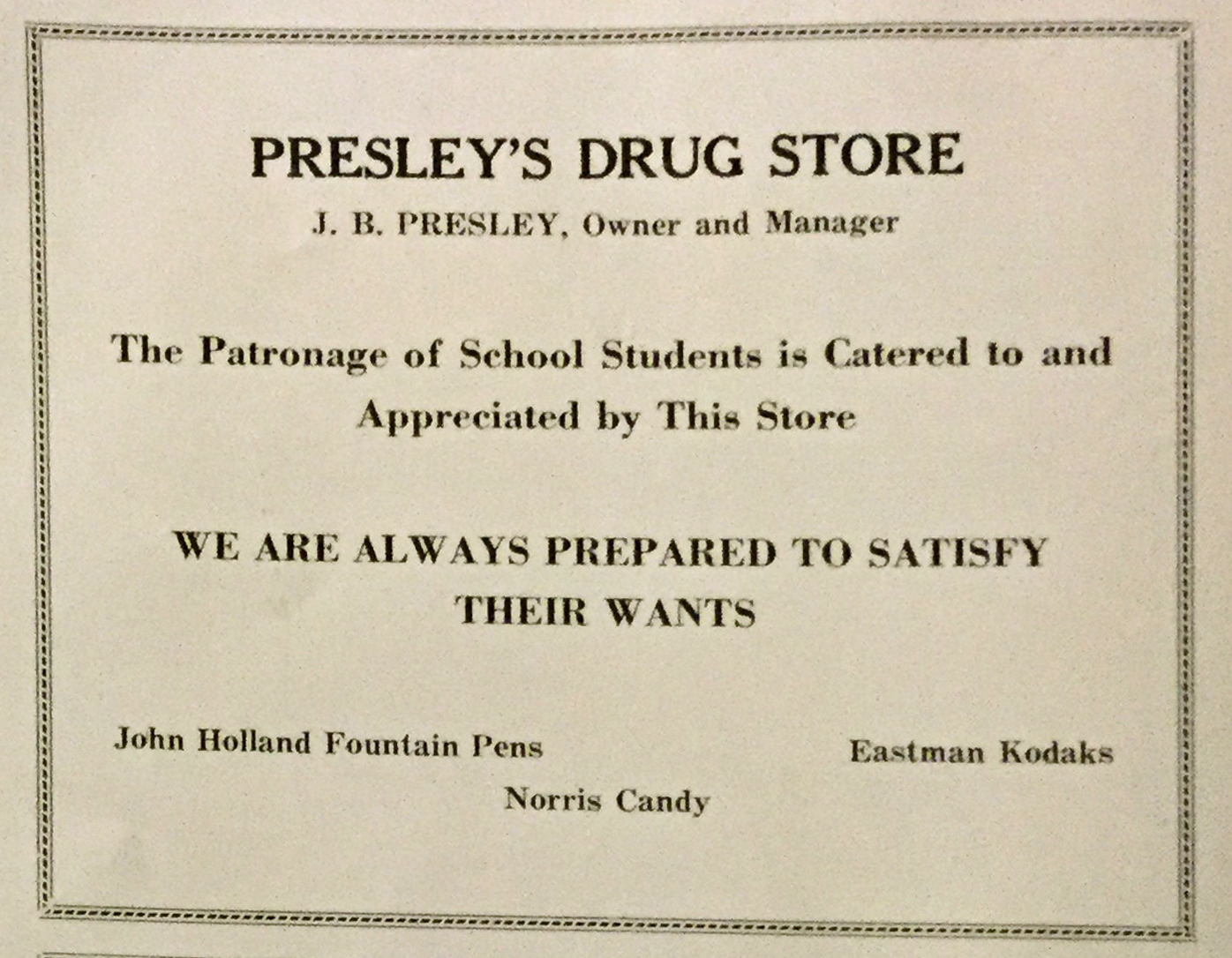
1945 article about the Hodges Brothers from the Progressive Age
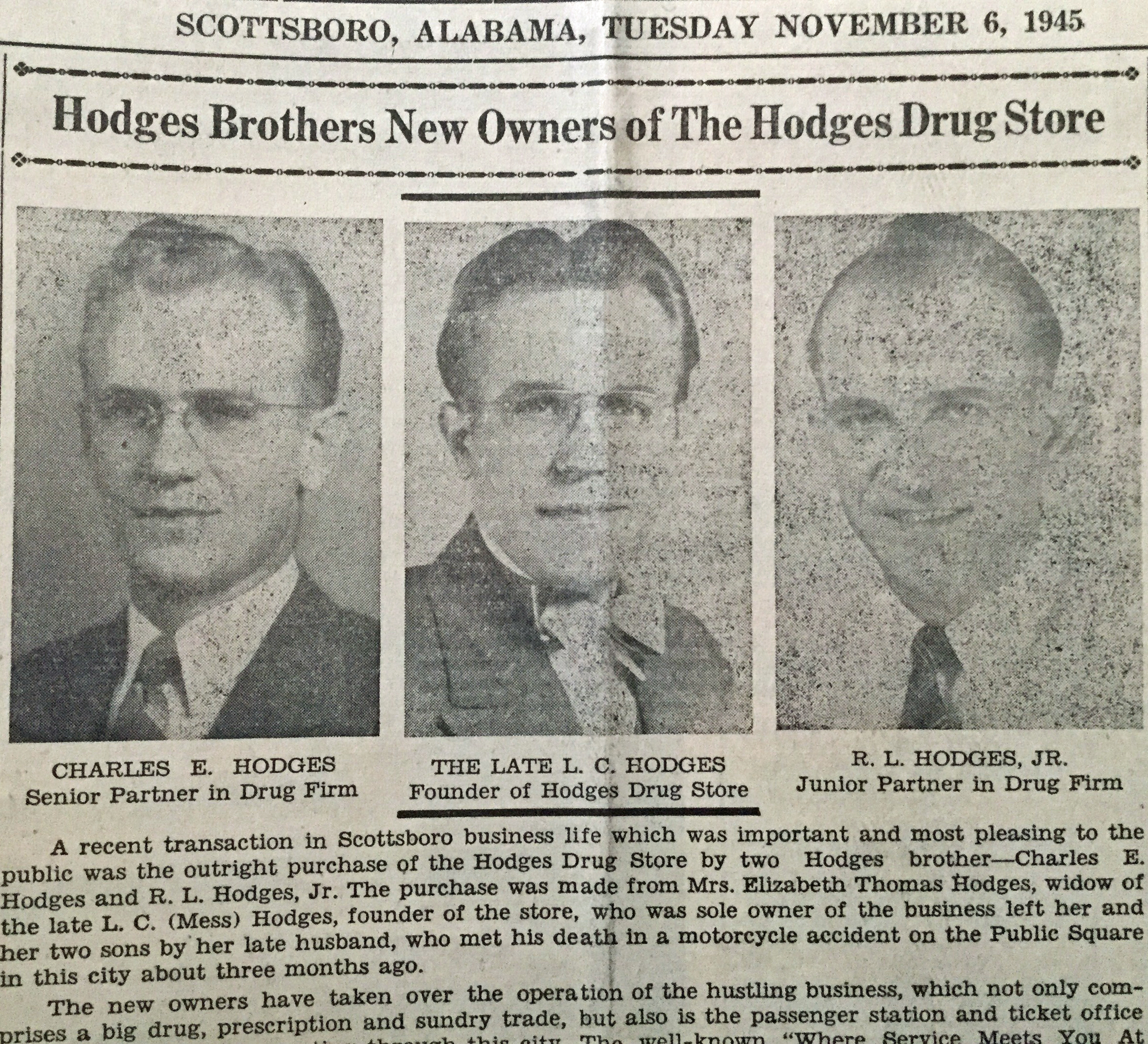
Sign Advertising Hodges Drugs
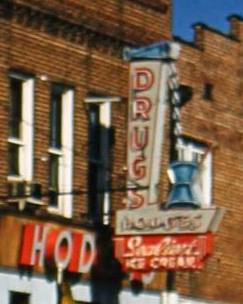
1942: photos from the of Hodges Drugs
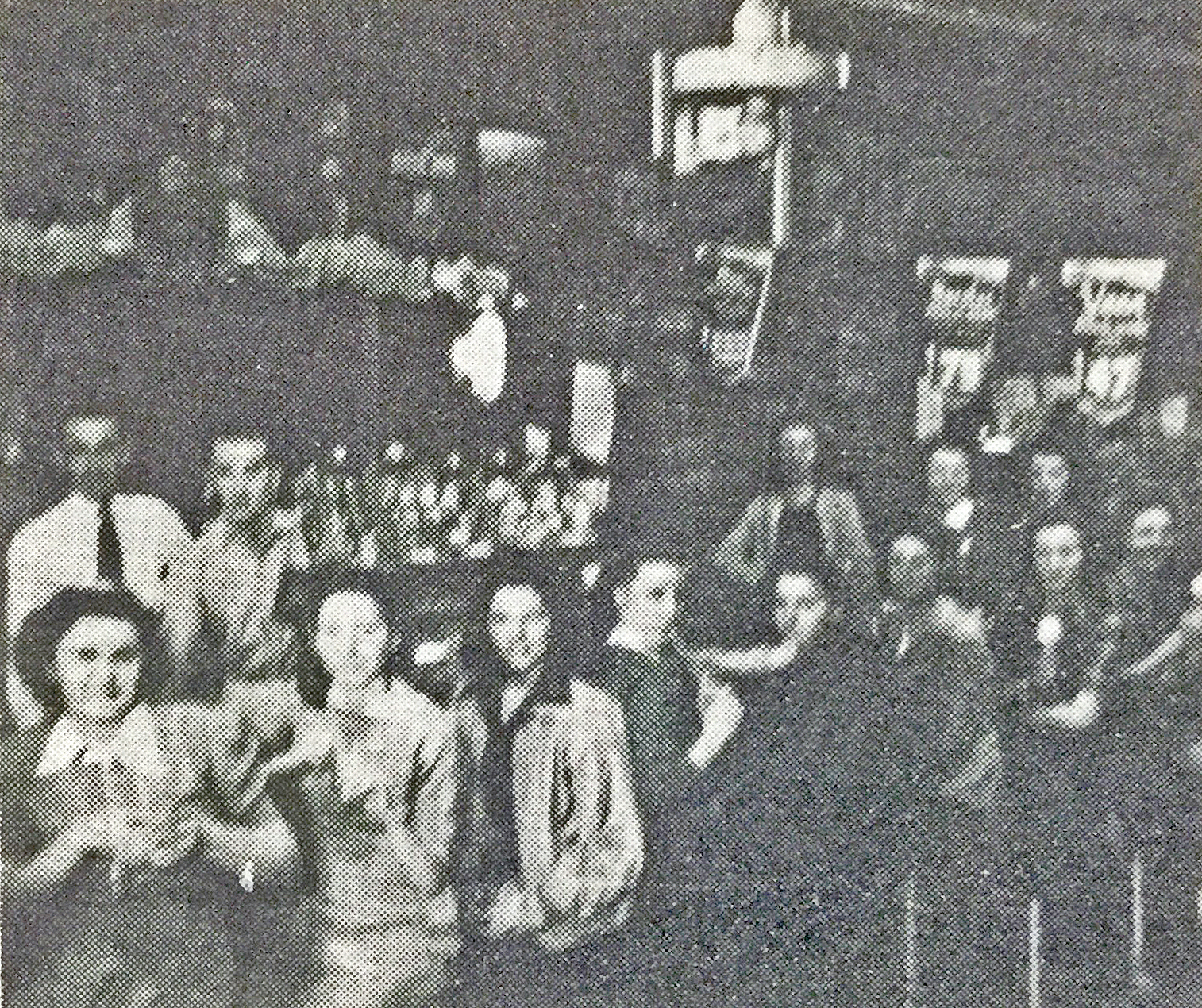
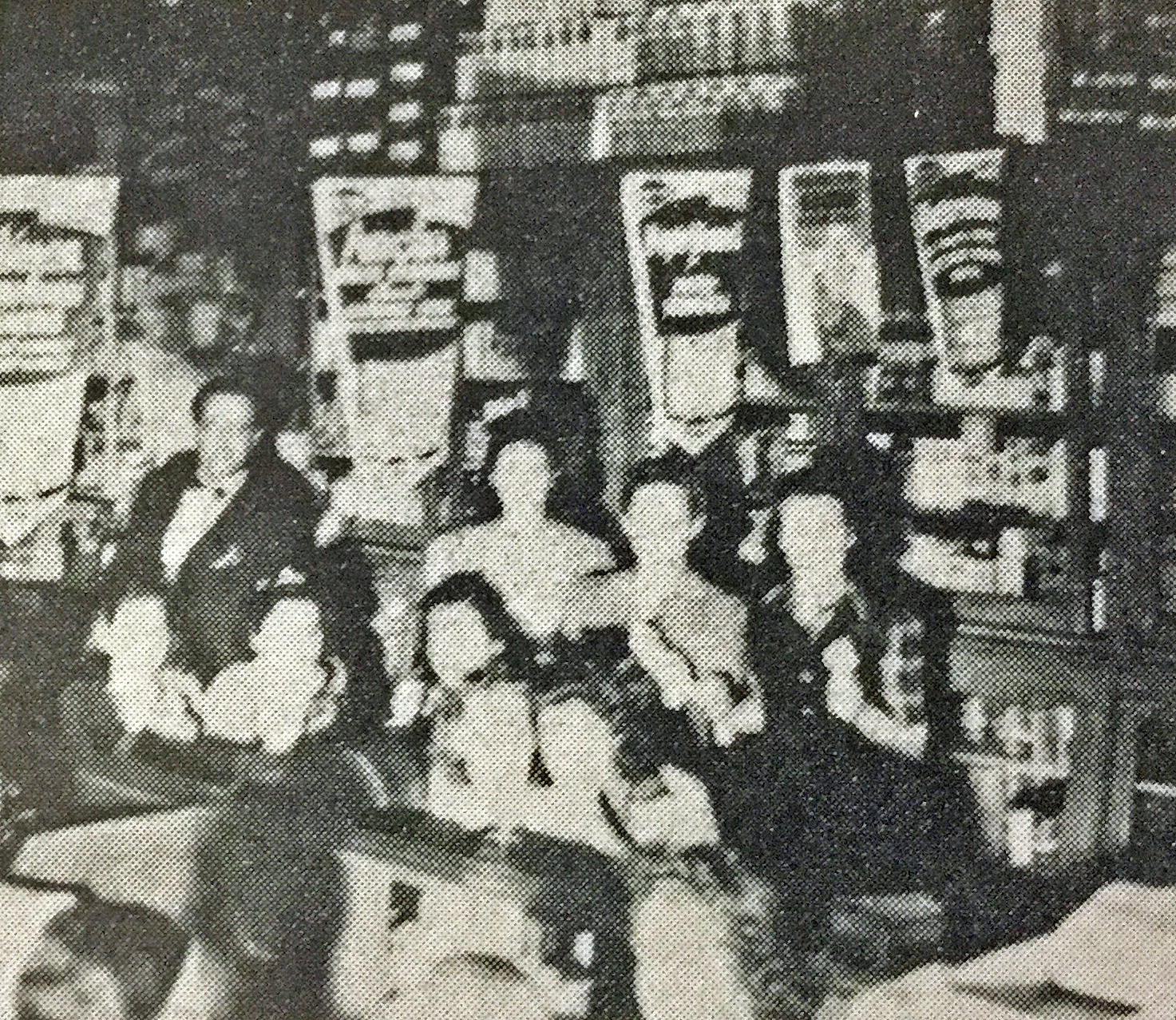
Hodges Drug Store ad from the 1956 phone book

Early 1960s homecoming parade
Notice that Hodges is still on the square at this time.
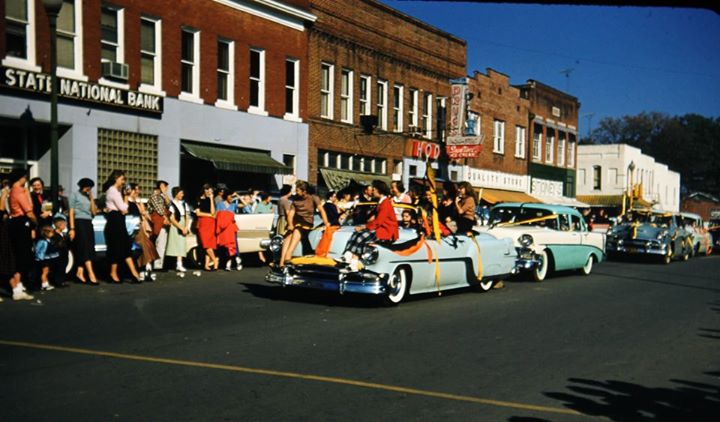
1966: Hodges Drug Store ad from the phone book
It is interesting to note that Hodges Drugs did not close one location before it opened a new one. Note that Hodges Drugs on the square and H & H Pharmacy on Parks Avenue coexisted.

1968 Mortar and Pestle as from the 1968 yearbook

1952: ad for Wales Jewelry from The Progressive Age

1950s Hackworth Building
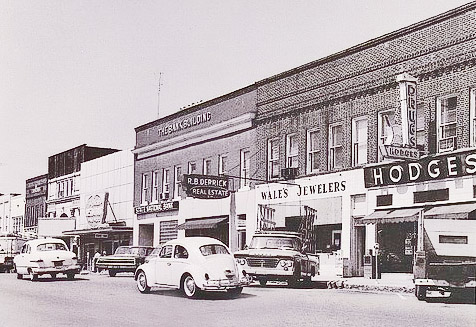
1975 Hackworth Building
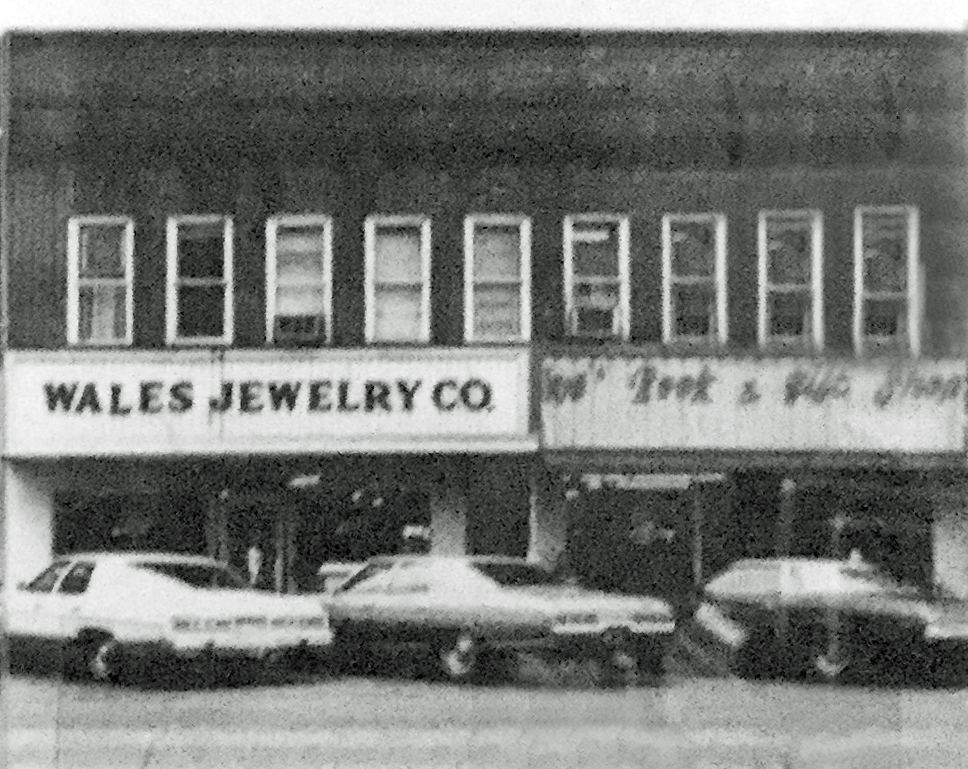
2010 familiar Wales Jewelry Store front
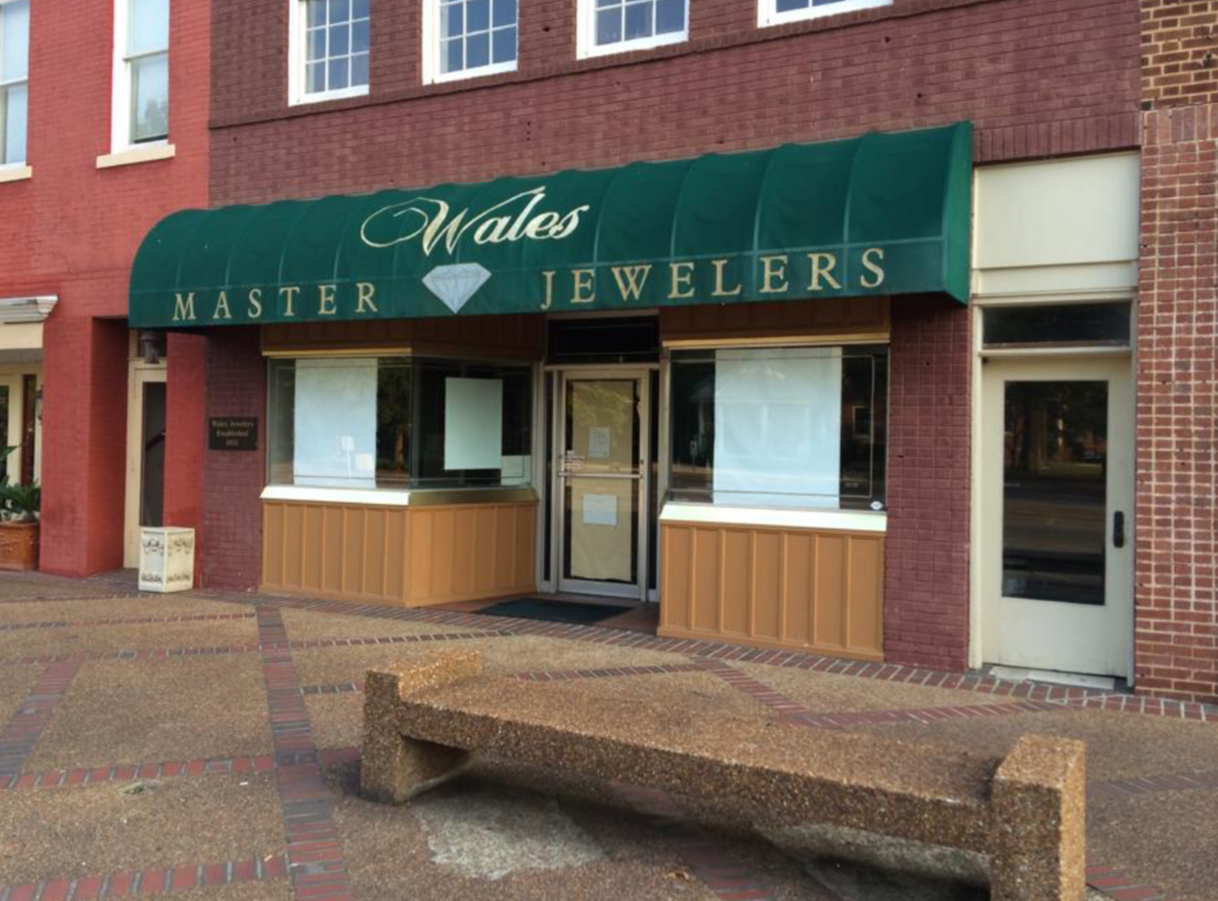
Tales of Hodges Drugs
Bob Hodges wrote about Hodges Drugs, his father’s business, in his “Going Home Again,” reflecting the square in 1952.
”We pass the Scottsboro Hotel on the left and then the Presbyterian Church, which sits right behind and across the street from Hodges Drug Store. In a year or two, I would gladly go to work as a soda jerk there because of the proximity of the Presbyterian Church. I had figured out in my calculating teenage mind that after Sunday School on Sunday morning, the Presbyterian kids would come in the back door of the drug store to get a coke before church, and I could get a heart‐fluttering glimpse of the girl I had secretly voted the most beautiful girl on earth—Virginia Brandon. Those moments were the strongest tug I would ever feel in my life to leave the Methodist Church, my mother’s faith, and become a Presbyterian. I was not theologically learned in those days, but I was sure that God surely would not punish me for going to sit in a worship service with one of his fairest creations.”
“You need to hang around here in the drug store with me while I work. You will meet some colorful and fascinating people. I have learned what they routinely order, and for most of them, I have it ready by the time they sit down. I know that Dr. Rayford wants a “dope,” the old timers’ term for a coke, because it originally contained a small amount of an opium ingredient, and I know he wants one squirt of cherry syrup in it. I know that Paul Conley wants a double dip of pineapple sherbet after his lunch. Once my dad scooped up two dips of Crisco and put them on a cone for Paul. They looked just like pineapple sherbet. He bit into it, and words came out of his mouth that I had never heard from a member of my church’s board of stewards. I know that George “'Buke” Armstrong wants a cup of coffee with an extra saucer, so he can saucer and blow it. They still live in my memory—all of them—C.O. Reed, the dapperly dressed banker with a bow tie, and Big Jim Moody, who got stuck in the men’s restroom at closing time one night, all four hundred pounds of him, and who had to be extracted by my dad and me. Mr. Coley Page and his suspenders, Avery Gay, the mentally handicapped man who came in clutching in his hand the exact amount of change for his coke, and who taught me, in his own way, all about reaching out to less fortunate people. Lizzie Bea Eyster, who would come in dressed to the nines, every time, and who had a raucous voice and who, when provoked,could make a sailor blush. Reverend O.B. Sansbury, the Methodist minister, who came seeking me out every time I missed Sunday School, saying, one time when I was hiding from him in the shrubbery at my home on Charlotte Avenue: “Bobby, I know you are in there—remember the Scout Oath!” Red Woodall and his dog, Bear, named for Bear Bryant. Durwood Hodges and Charles David Presley and Eddie Ray Hembree. Dr. Thompson, the pharmacist, who was a mildly spoken and very small man, so skinny you could see very vein in his arms. My dad nicknamed him “Vitamin Thompson.” The undertakers who were our customers, W.R. Henshaw and Catherine, who would come in every Saturday night for supper in the drug store. Roland Bolton, who would come in from embalming at Word Funeral Home for a cup of coffee, and who would unnerve my dad by slowly shaking hands with him and looking deep into my dad’s eyes and saying, “R.L., how are you feeling?”